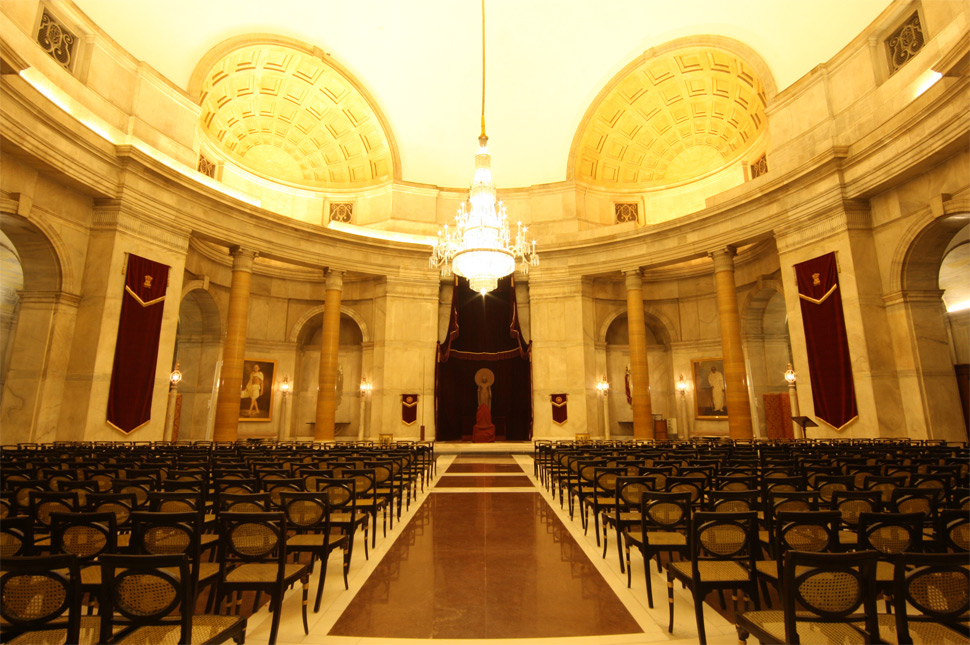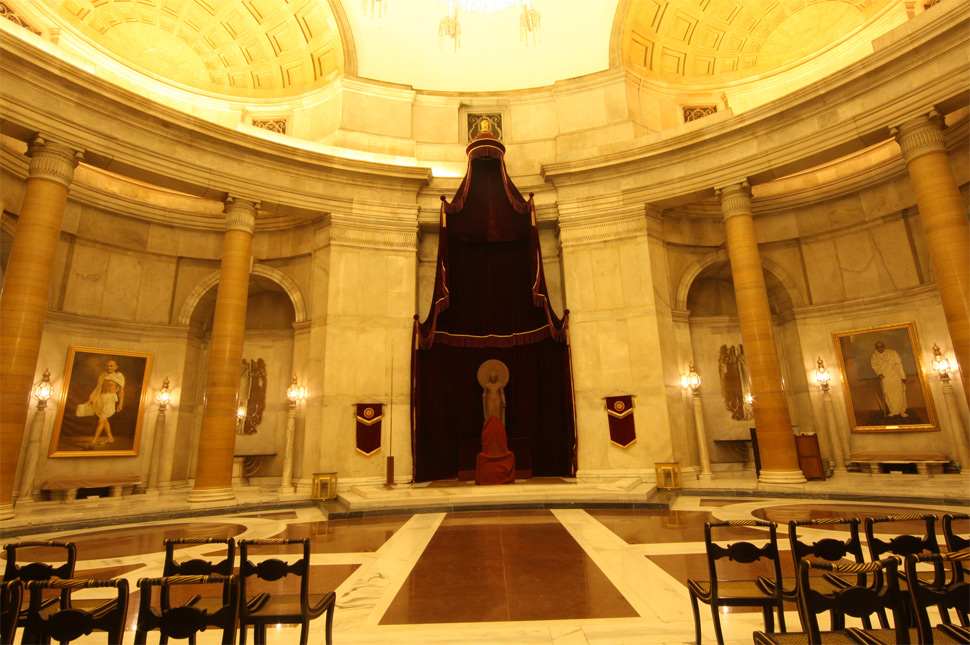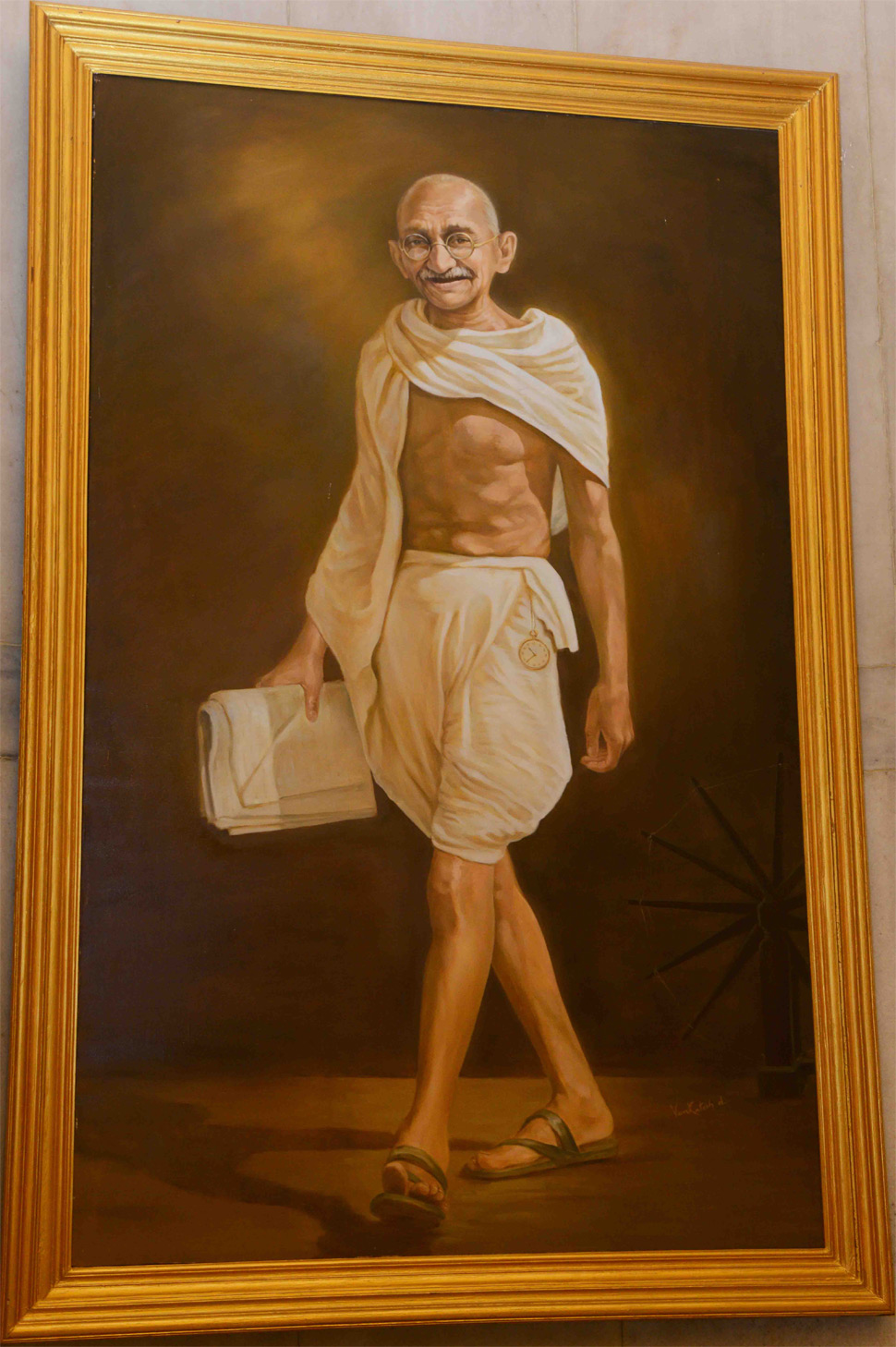The magnificent Ganatantra Mandap of Rashtrapati Bhavan bears testimony to this historic moment of the swearing in ceremony of Independent India's first government.

The grand simplicity of Rashtrapati Bhavan’s Ganatantra Mandap is enthralling as it is indisputably the most regal room of the presidential palace. Erstwhile known as the Throne Room, it is also where C. Rajagopalachari took oath as the Governor-General of India in the year 1948.
Currently, the Ganatantra Mandap is used to host Civil and Defence Investiture Ceremonies wherein the Hon’ble President of India confers the prestigious honours to the recipients. Swearing-in ceremonies of incoming governments, additions to the Council of Ministers and the swearing in of the Chief Justices of India are all conducted at the Ganatantra Mandap. The Ganatantra Mandap was also used for paying respects to India’s fifth President Fakhruddin Ali Ahmed on the solemn occasion of his demise in the year 1977.
This ceremonial hall that is right under the central Dome of Rashtrapati Bhavan can be accessed from three sides, through the front forecourt steps via the six meters tall teak door and through the twin ash grey marble stairways on Ganatantra Mandap’s either sides. Christopher Hussey noted that, “the impact of the Ganatantra Mandap, however approached, is immediate, overwhelming and utterly silencing.” The 42 feet high walls are cased in white marble. The dome is said to be 22 metres in diameter and 25 metres above the ground. The double dome feature with an oculus in the centre of the dome floods the Ganatantra Mandap with sunlight, highlighting its features. An exquisite Belgium glass chandelier decorates the Ganatantra Mandap as it hangs from a height of 33 meters from its ceiling.
There are four apses, two on the western side and two on the eastern side that have coffered vaults, the archivolts of which cut into the dome. The Ganatantra Mandap is encircled by columns, made of yellow Jaisalmer marble, with white caps and bases. Twelve marble jaalis in the attic serve the decorative purpose of the room as well as provide ventilation and light. The gleaming marble floor with bold geometrical patterns adds to the majestic aura of this Hall. Robert Byron had rightly said, “The pattern of the floor alone is so huge as to leave the entrant breathless, almost frightened to make his first two or three steps.” The marble used for the floor of the Ganatantra Mandap was mostly from India. The white marble was obtained from Makrana and Alwar, grey marble from Marwar, green from Baroda and Ajmer and pink from Alwar, Makrana and Haripas. However, the deep chocolate colour variety of marble used for the Ganatantra Mandap was imported specially from Italy.


Against the wall, is placed the 5th century A.D. statue of Lord Buddha on a crimson velvet background. In front of this statue is placed the President’s Chair. Earlier, two thrones were placed at this spot, one for the Viceroy and the other for the Vicereine.
The Ganatantra Mandap corridor displays the busts of former Indian presidents, sculpted by noted sculptors from across the country. The Marble walls of the hall have life size paintings of Mahatma Gandhi made by Venkatesh D, C. Rajagopalachari made by Biren De , Shri Jawaharlal Nehru made by Gerasimov and Dr. Rajendra Prasad made by J.A. Lalkaka. Six tall banners in deep red with the National Emblem of India in gold also adorn the Ganatantra Mandap.








